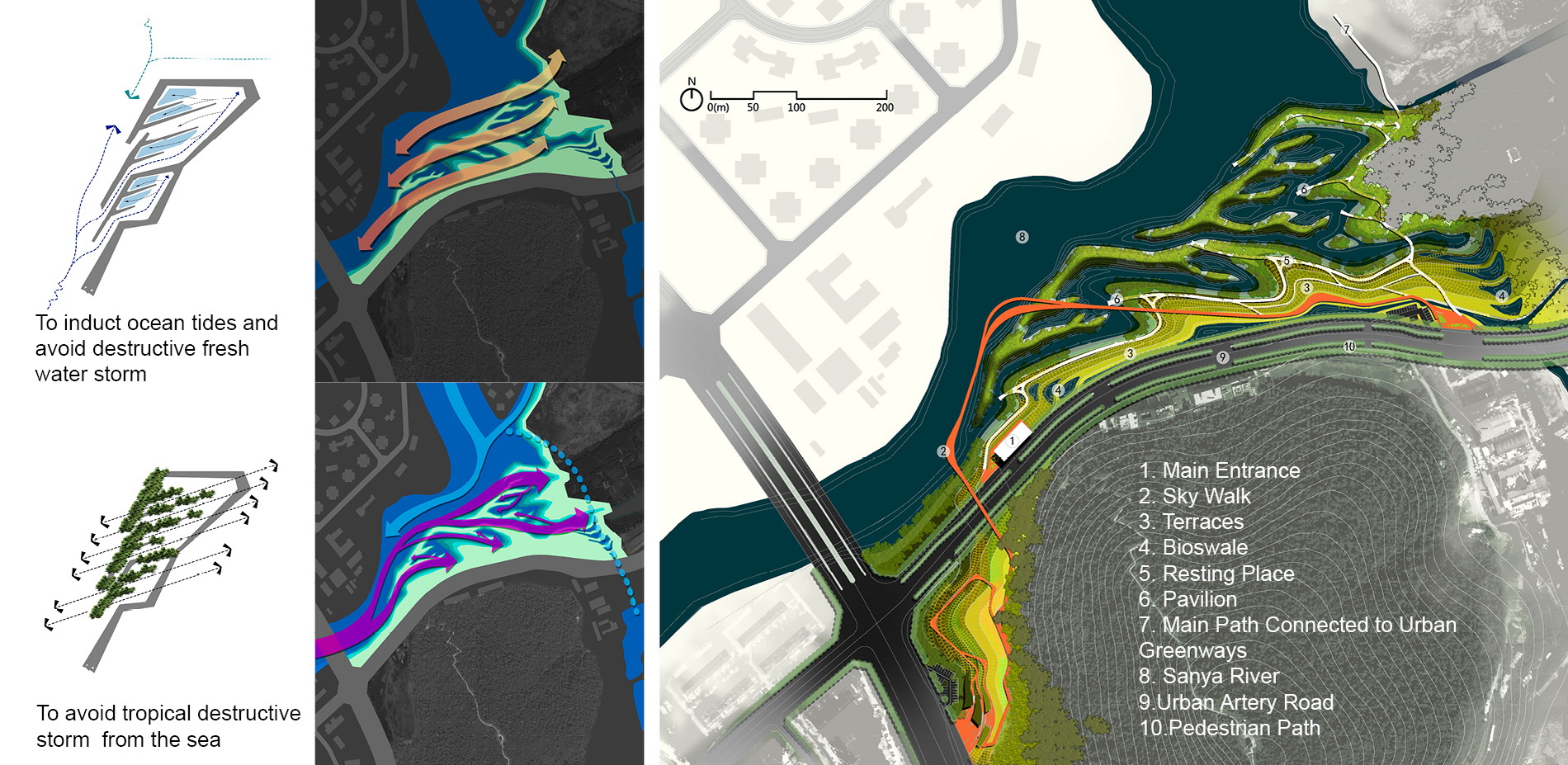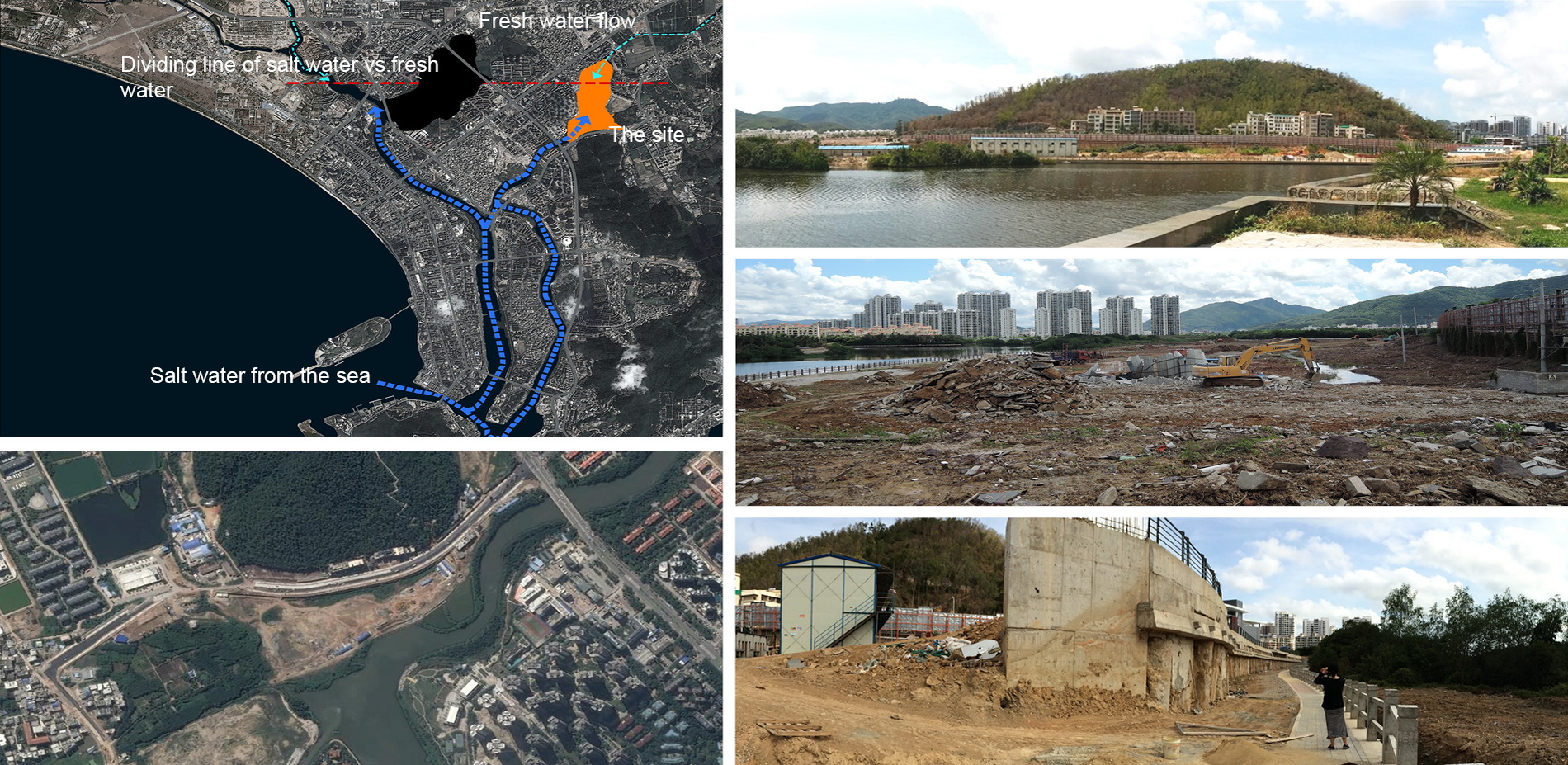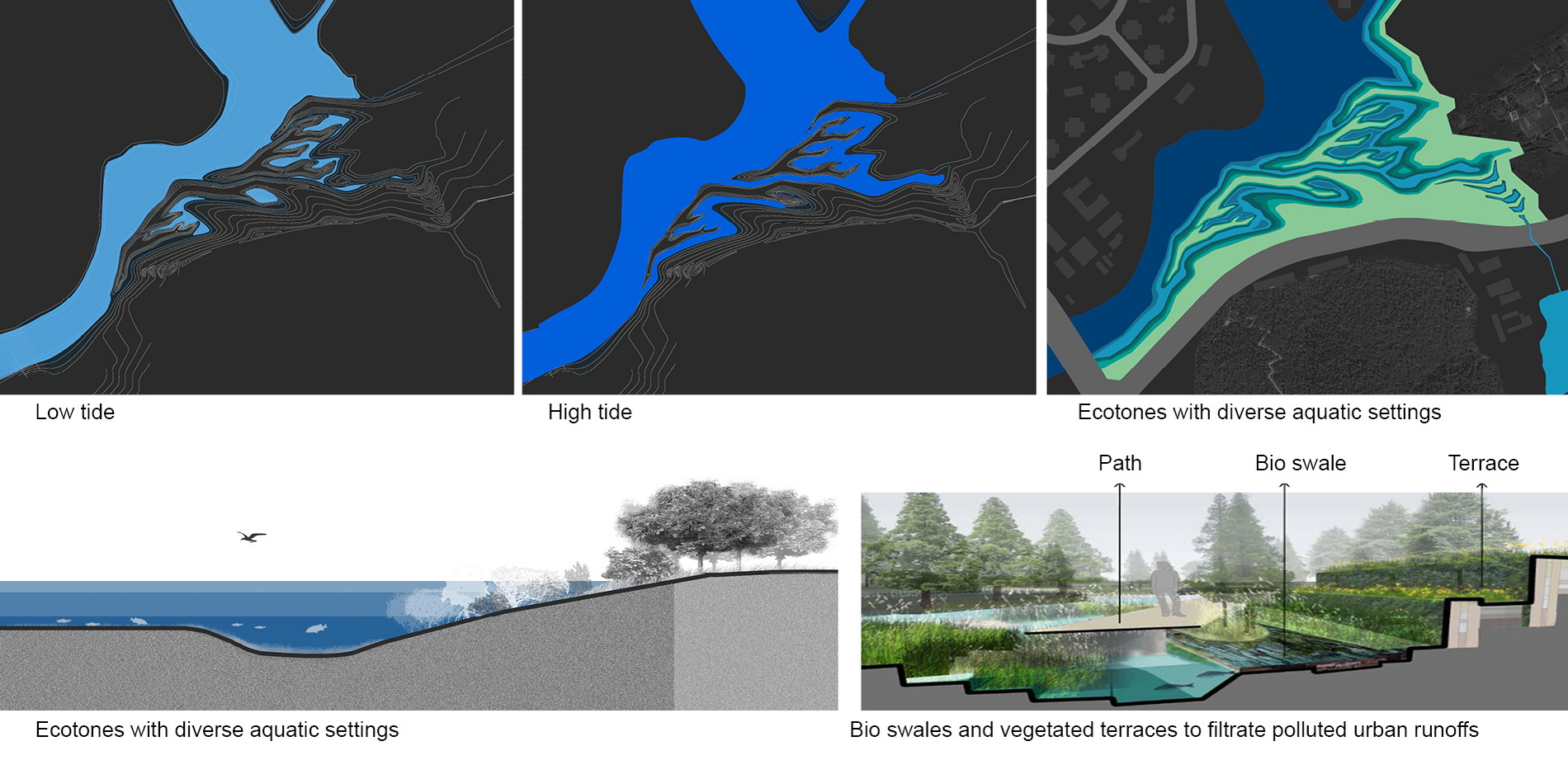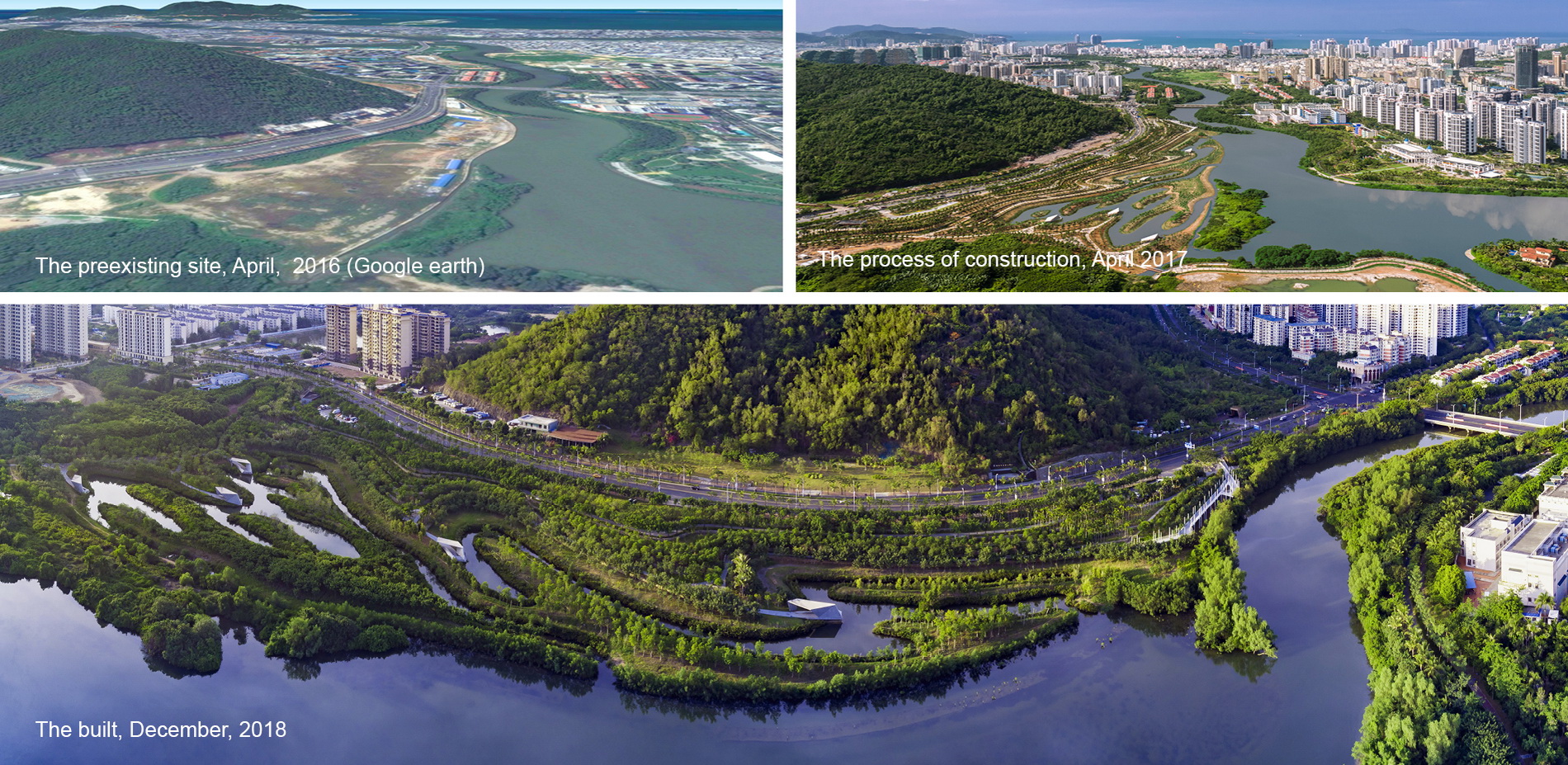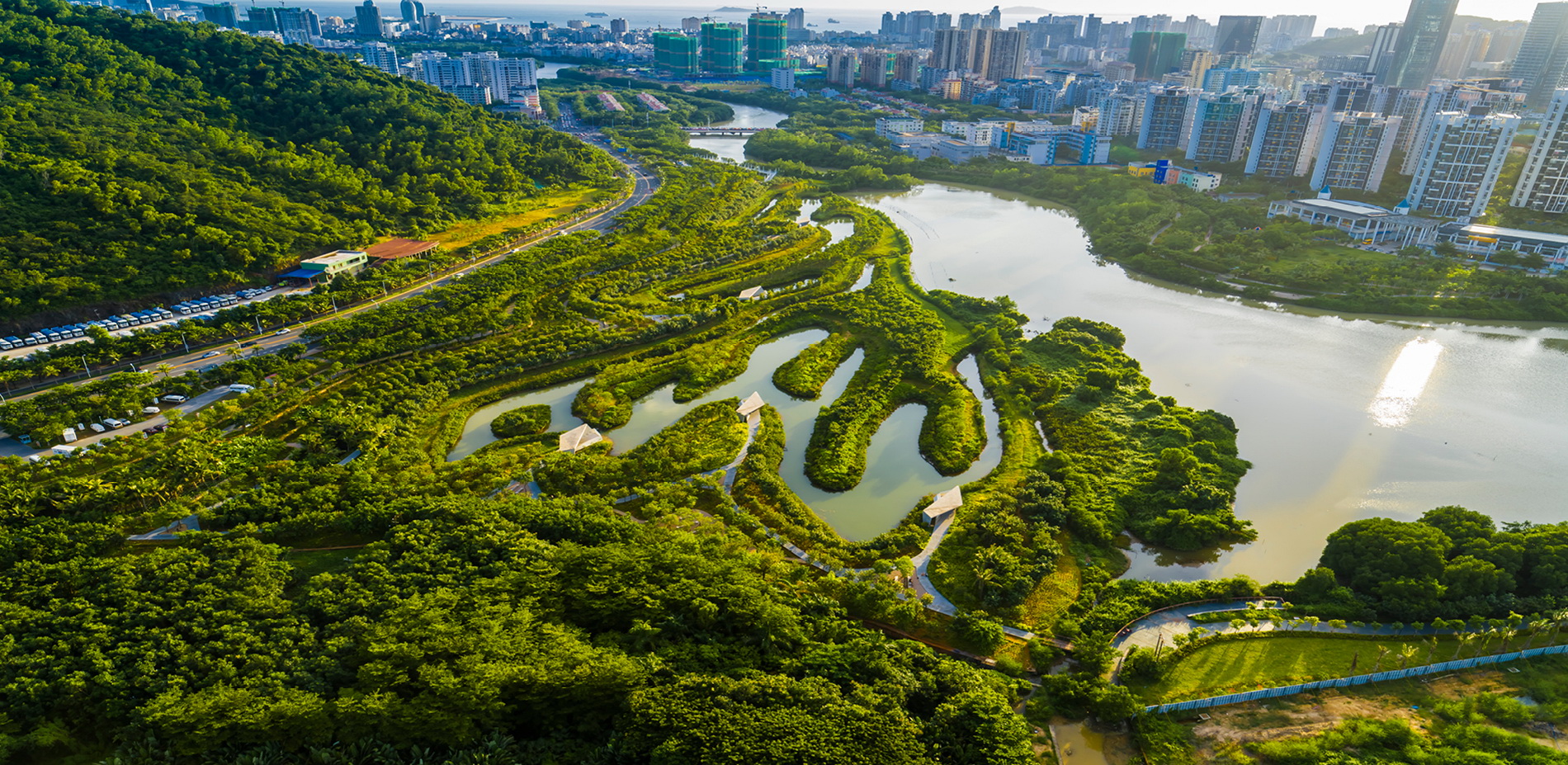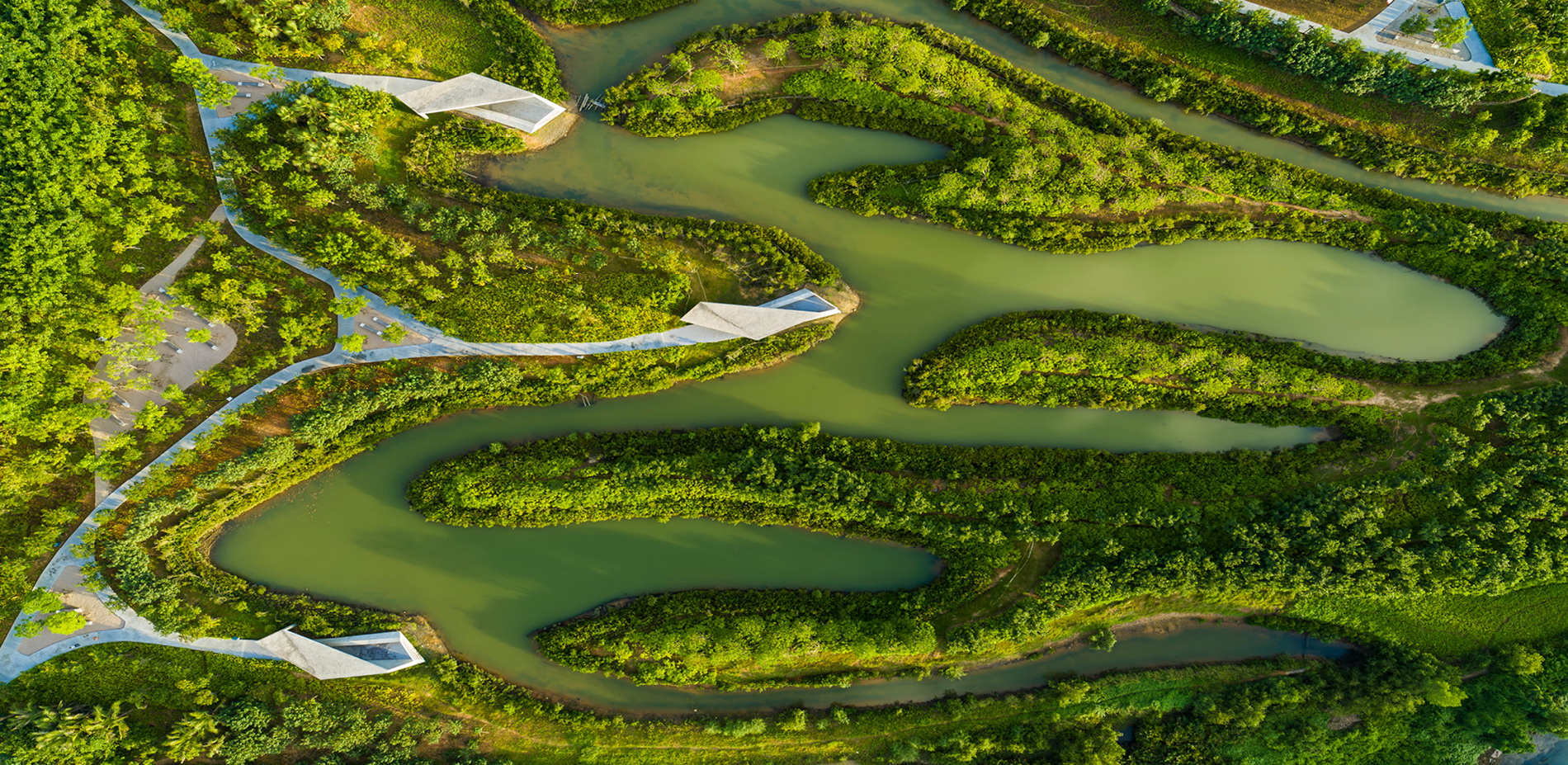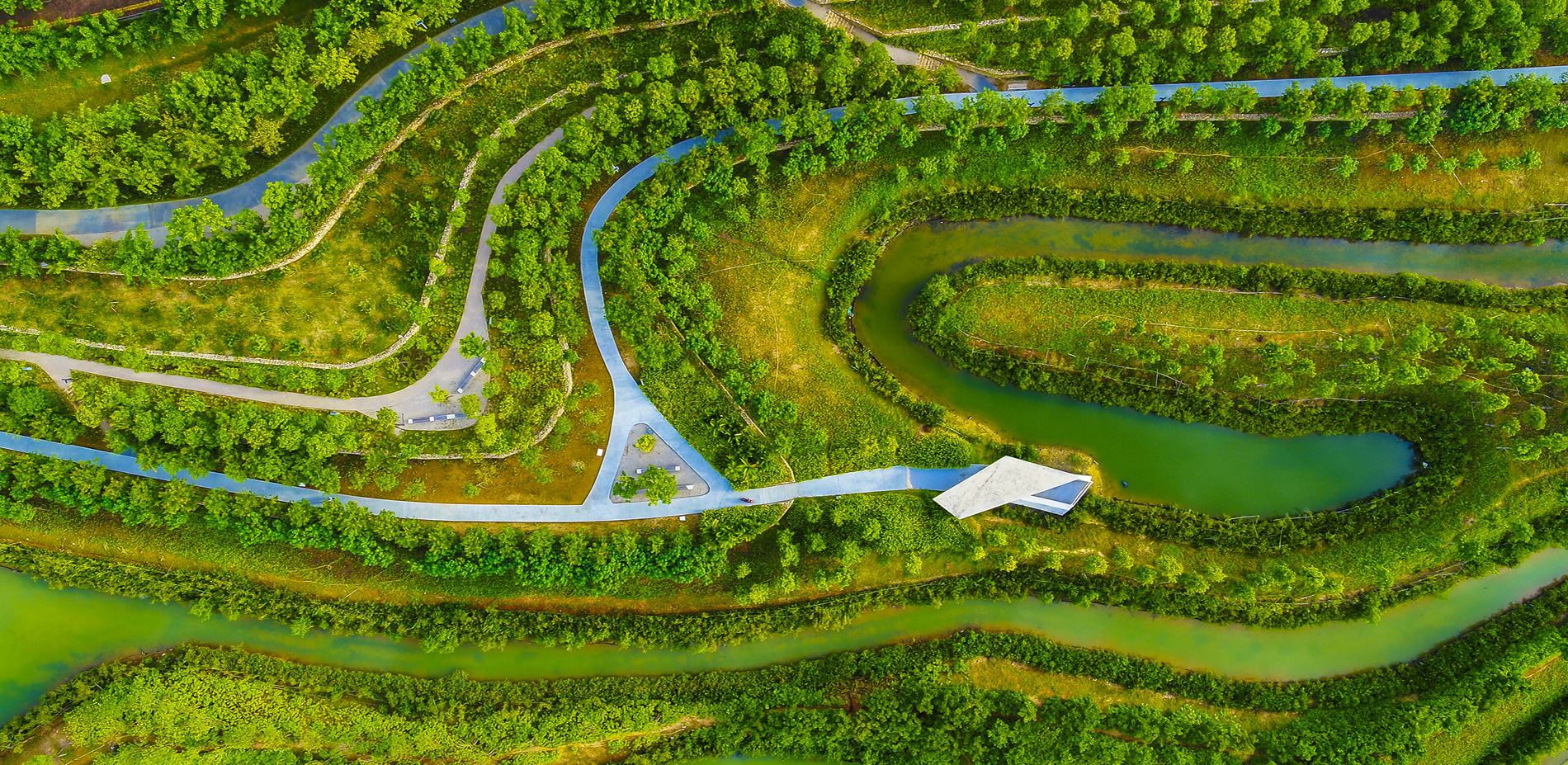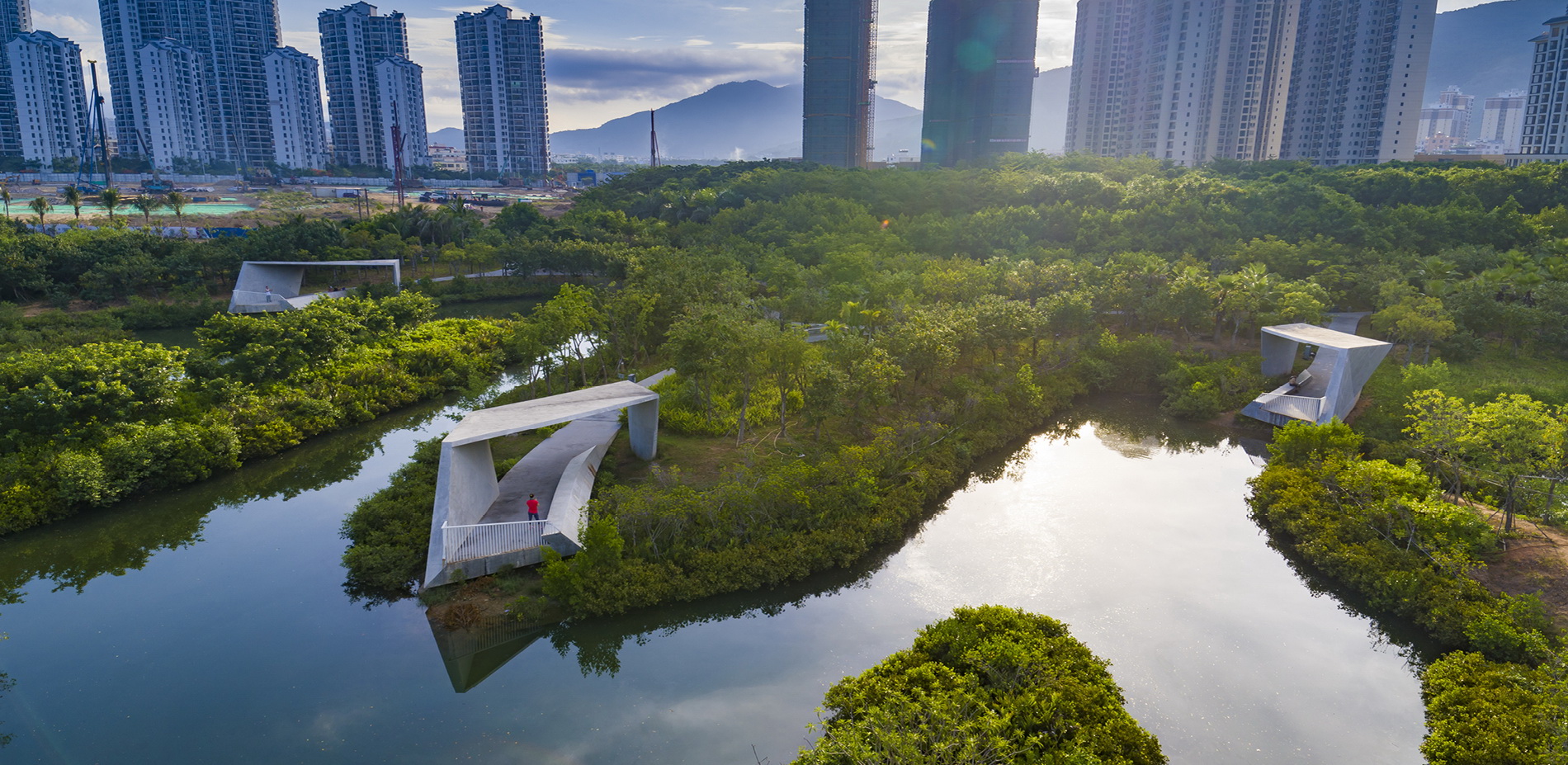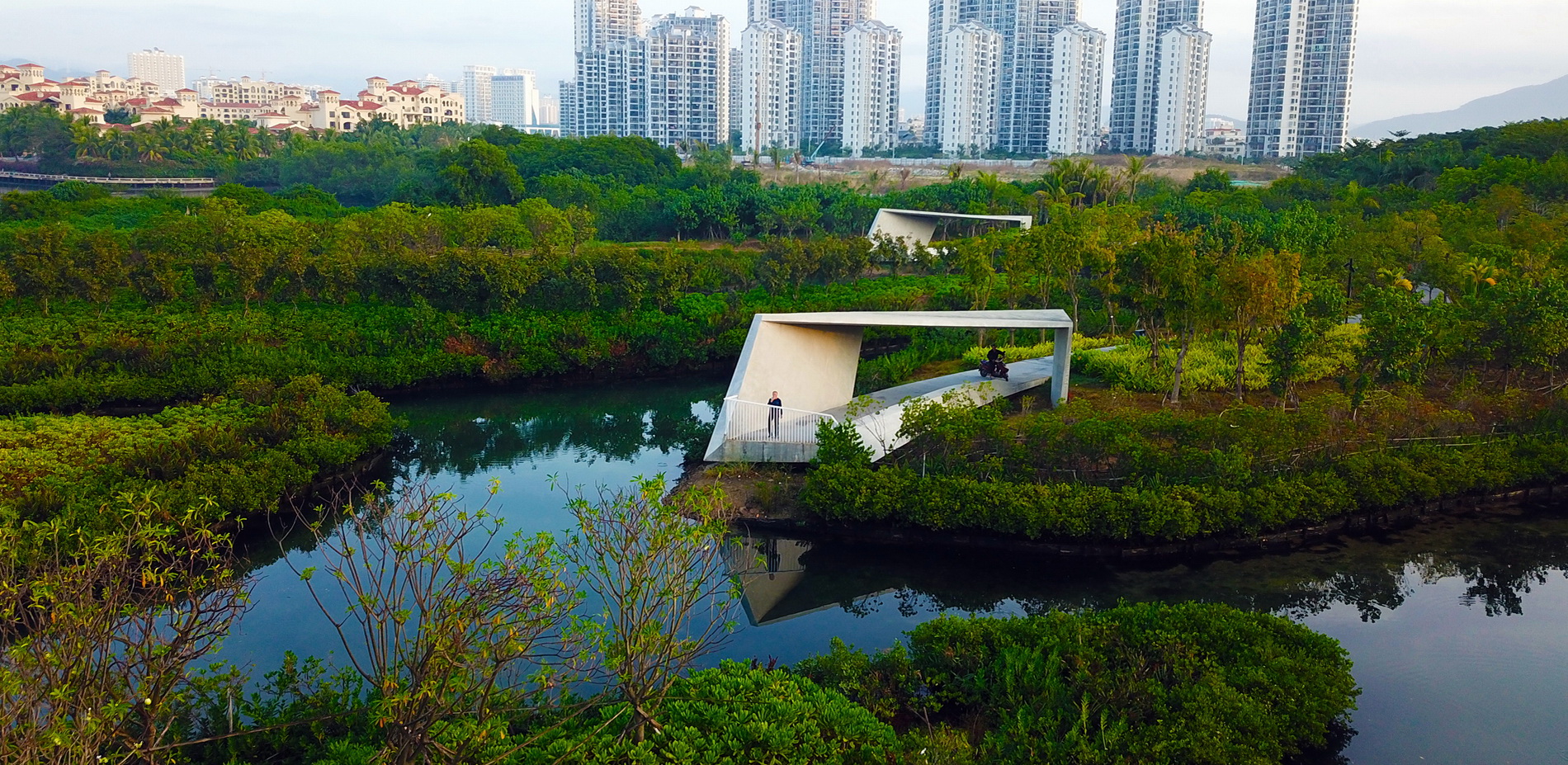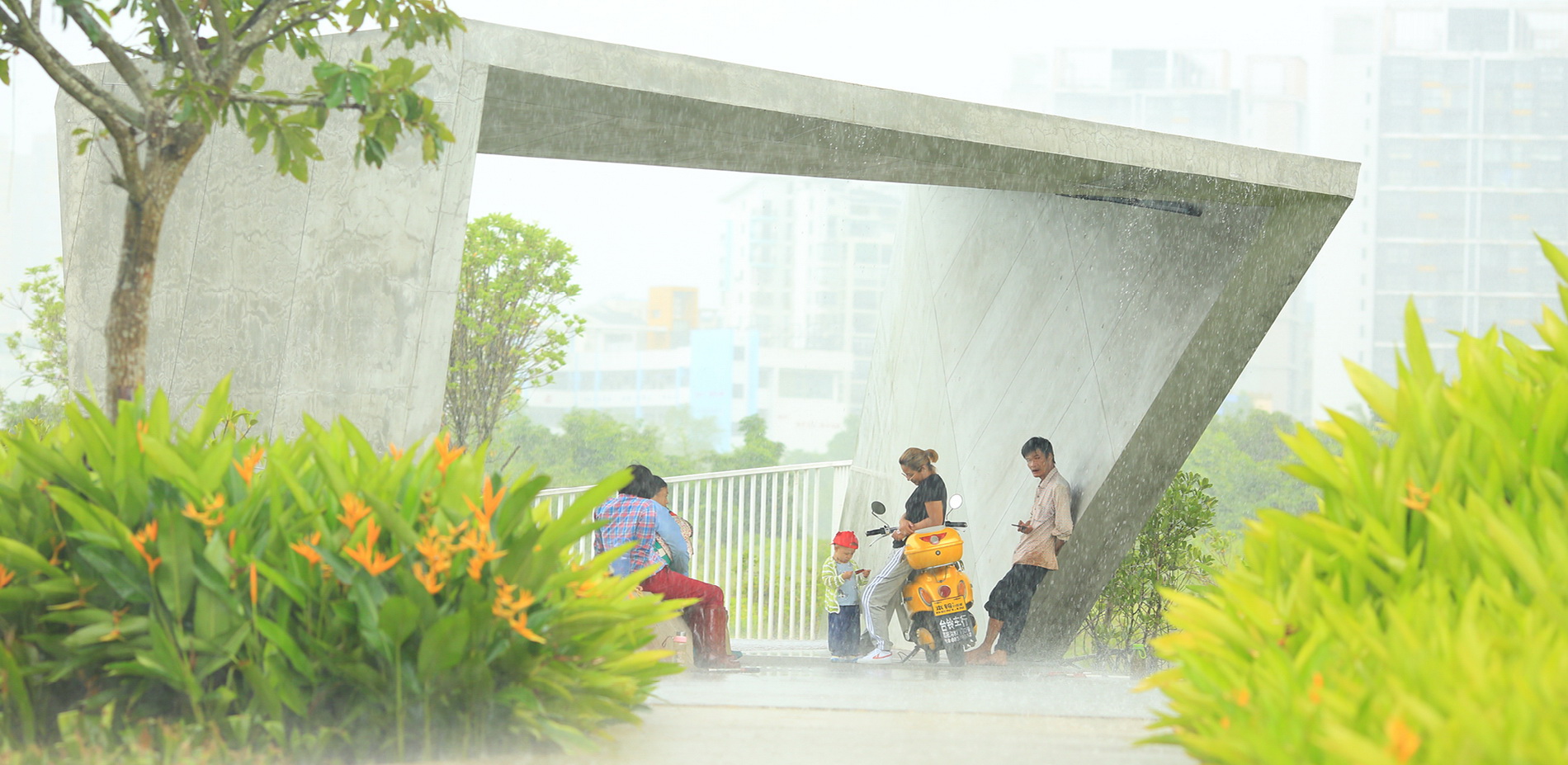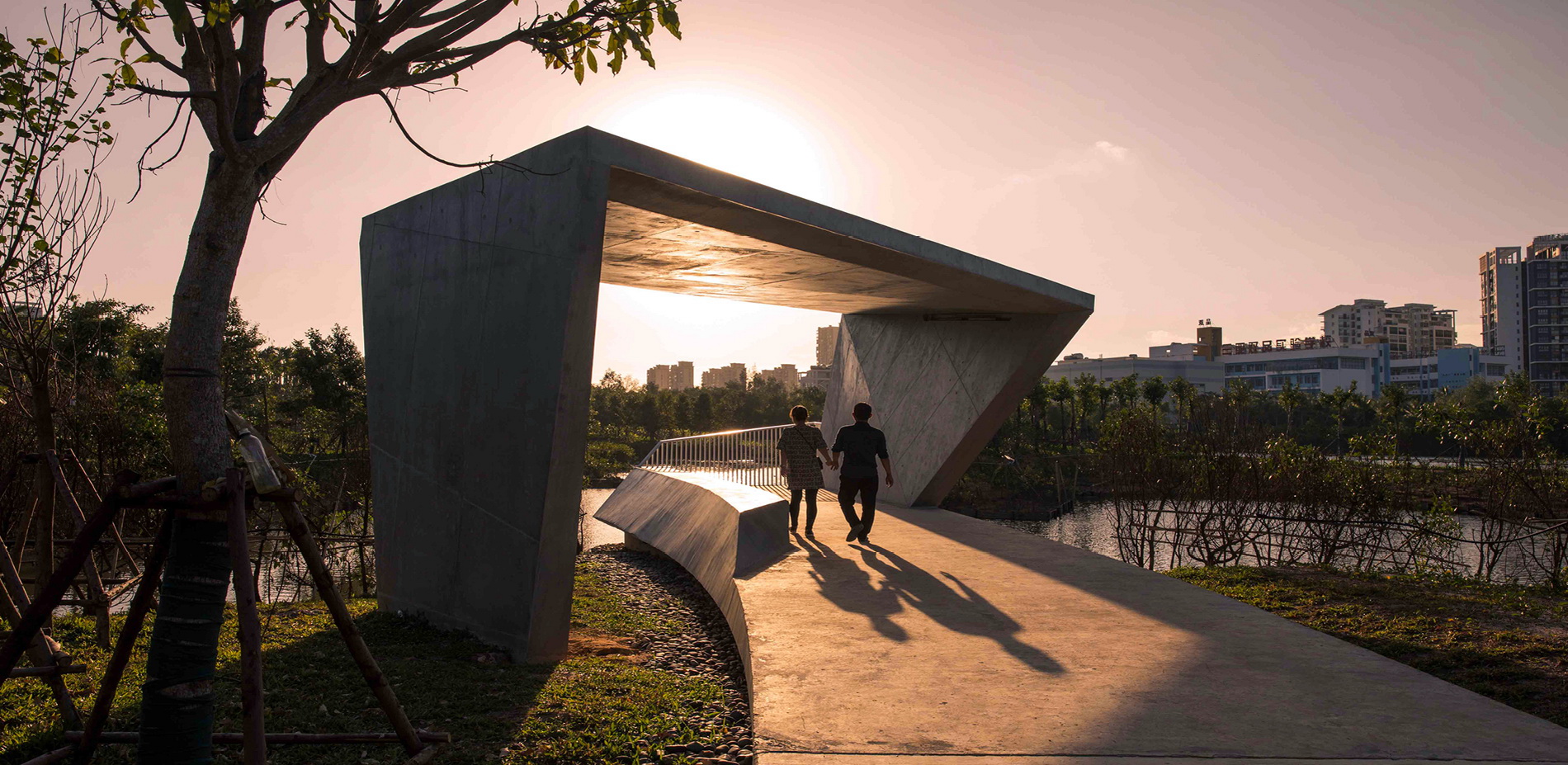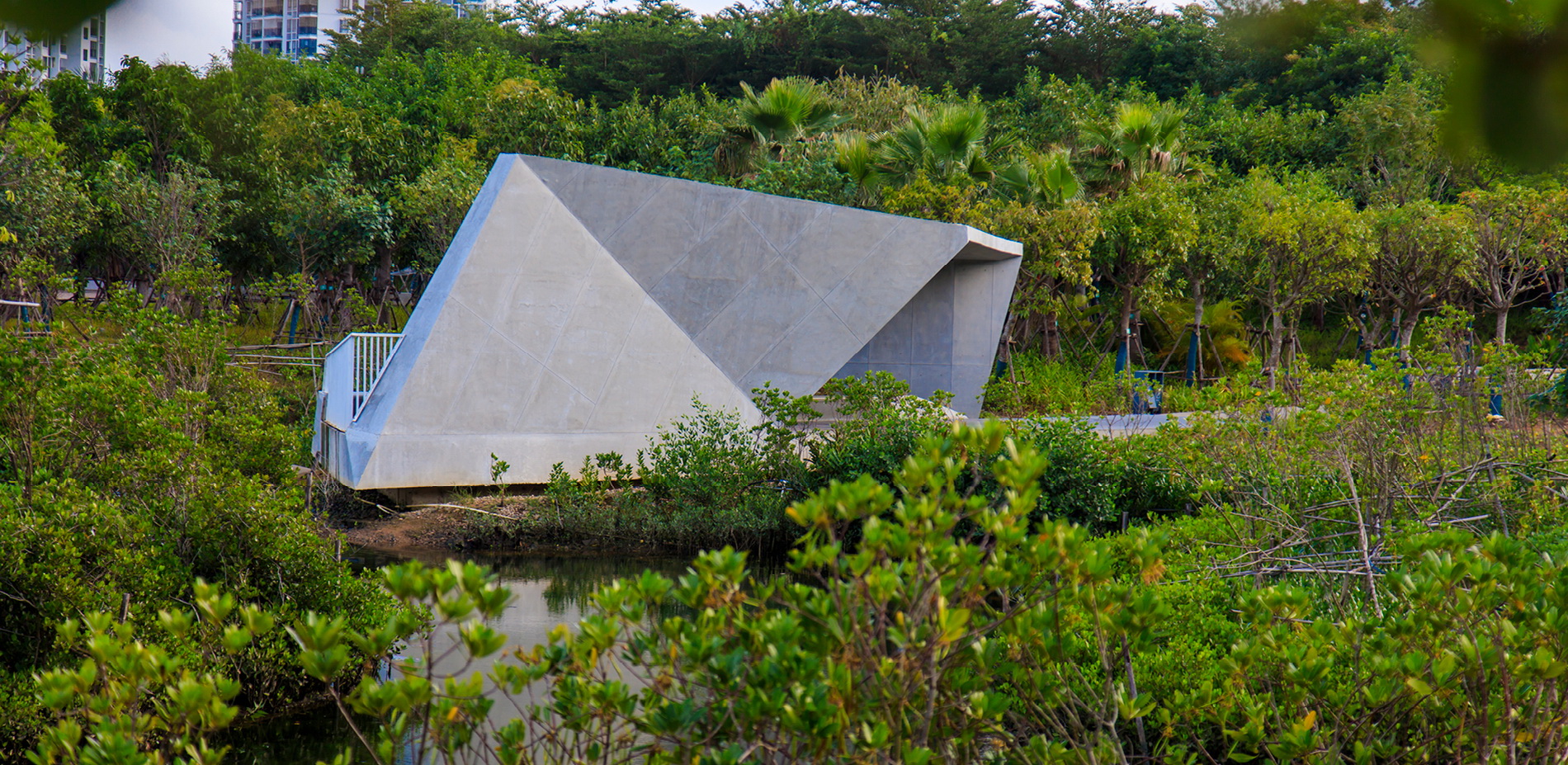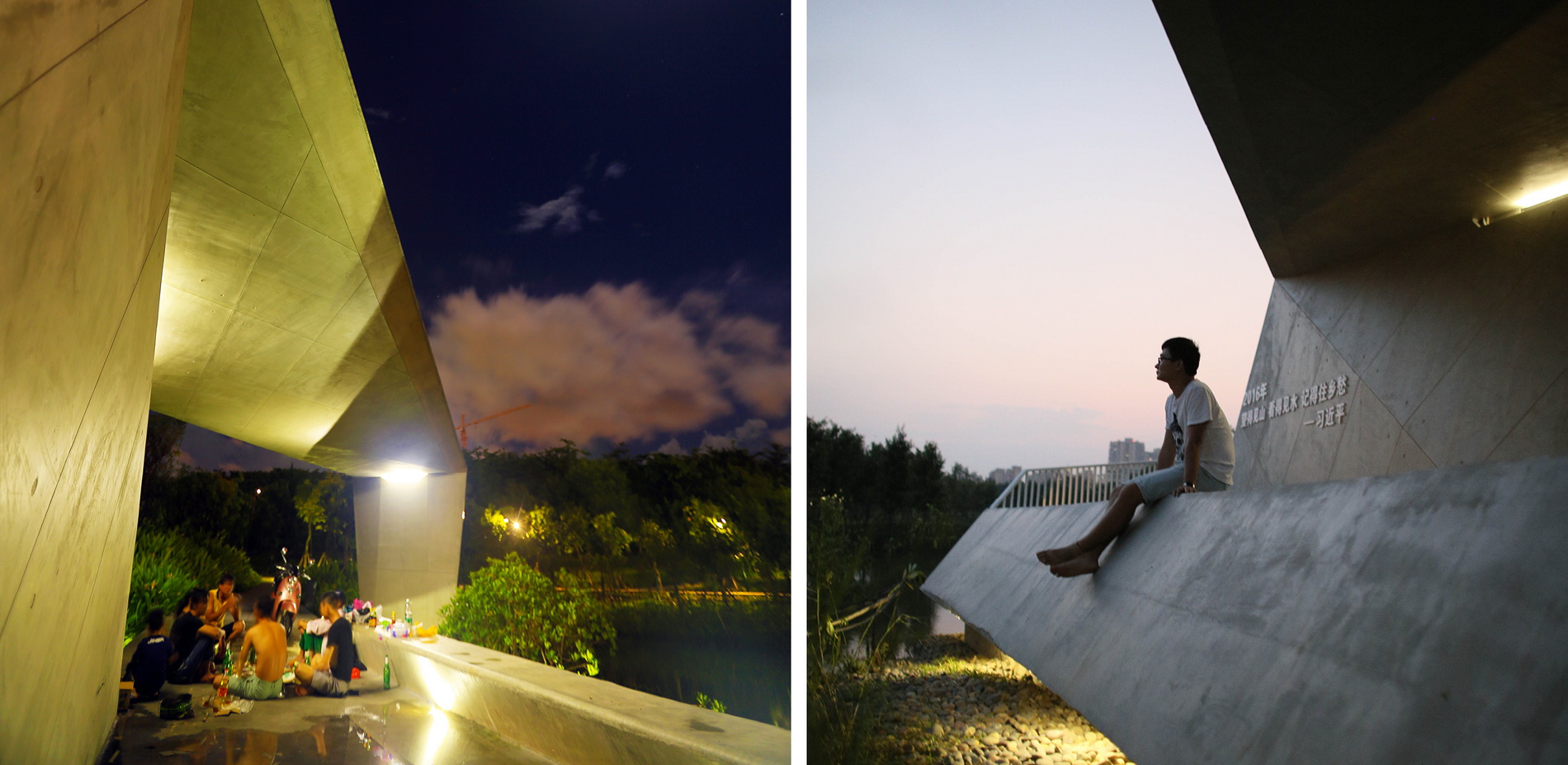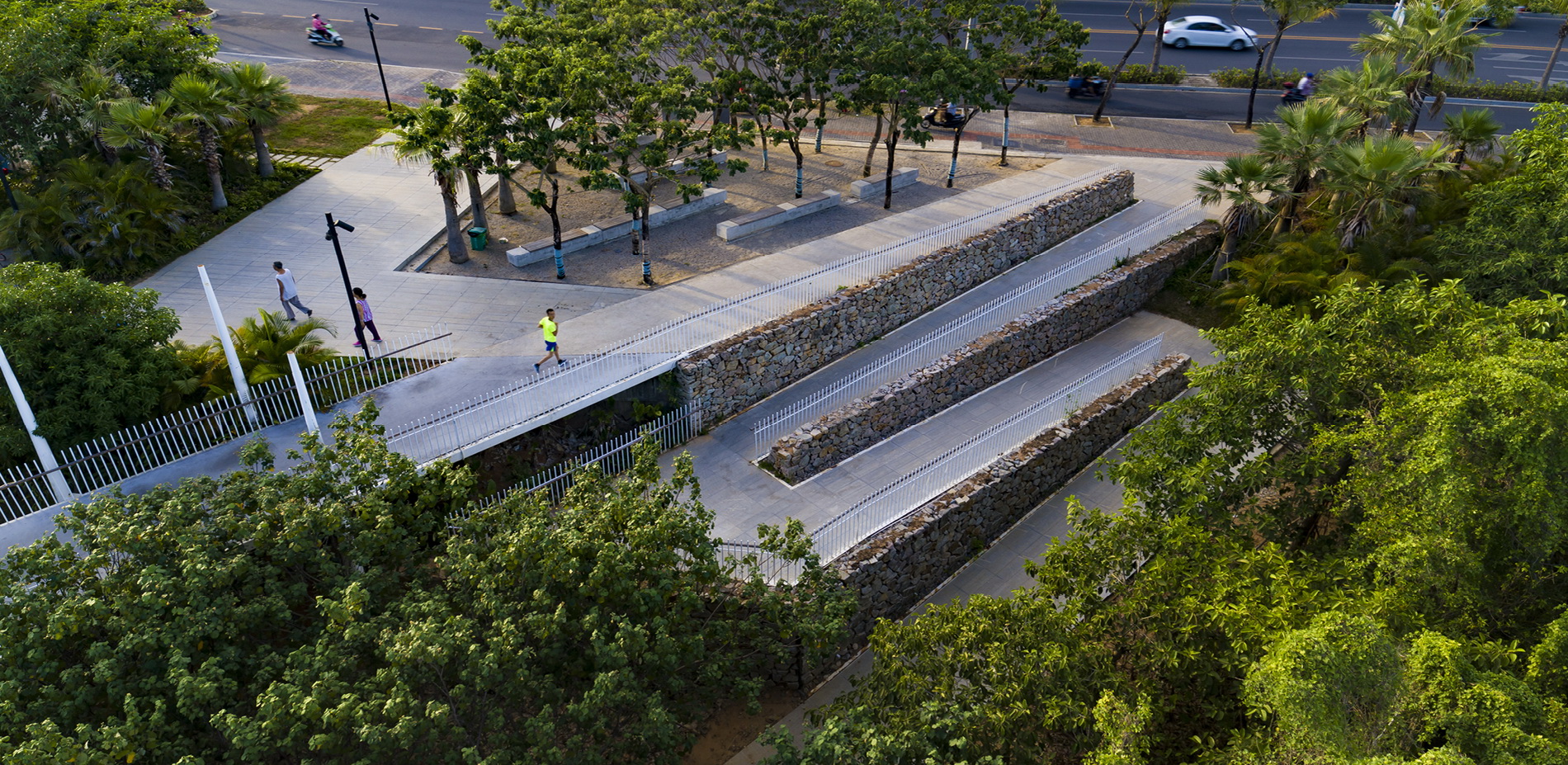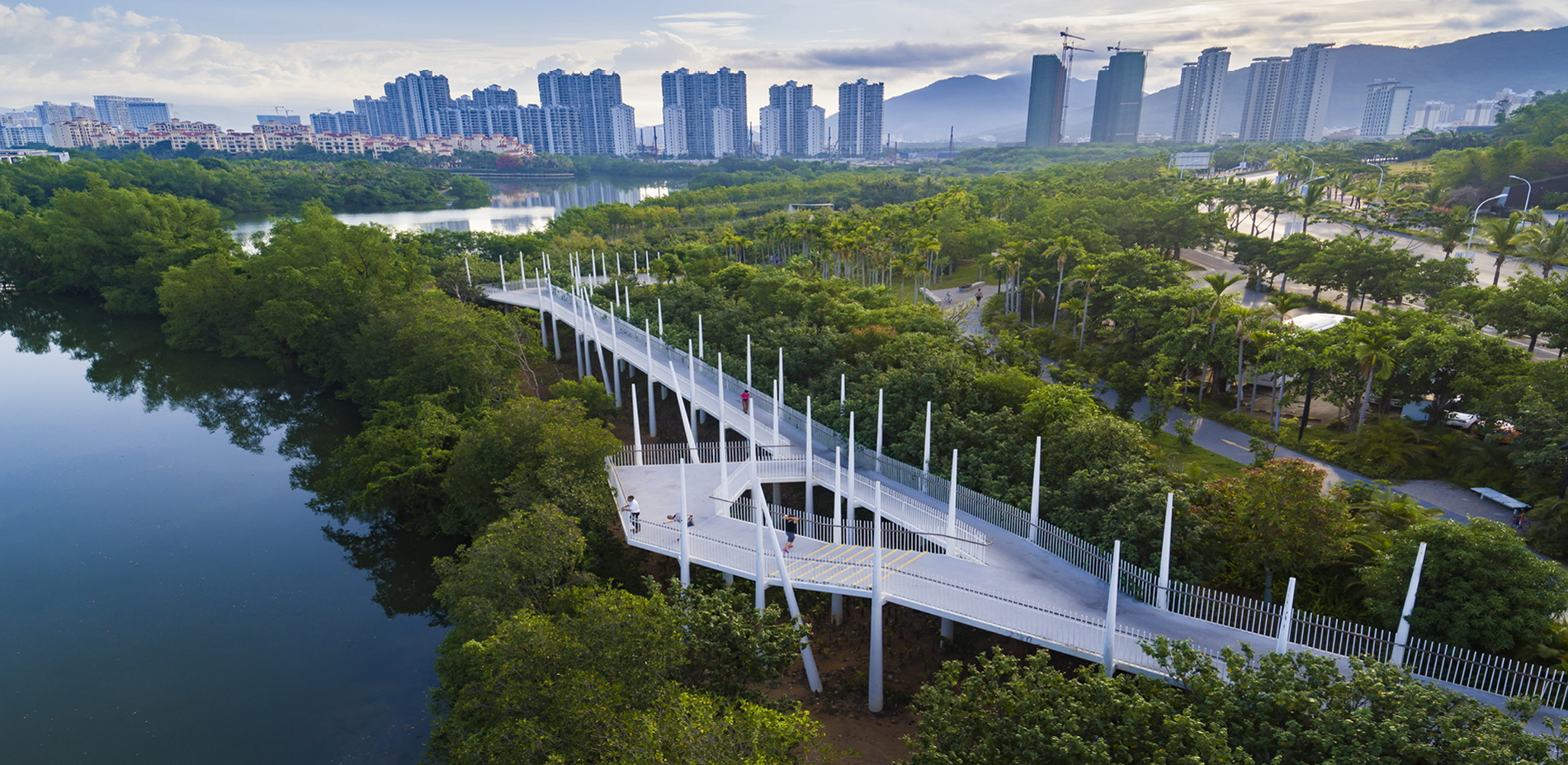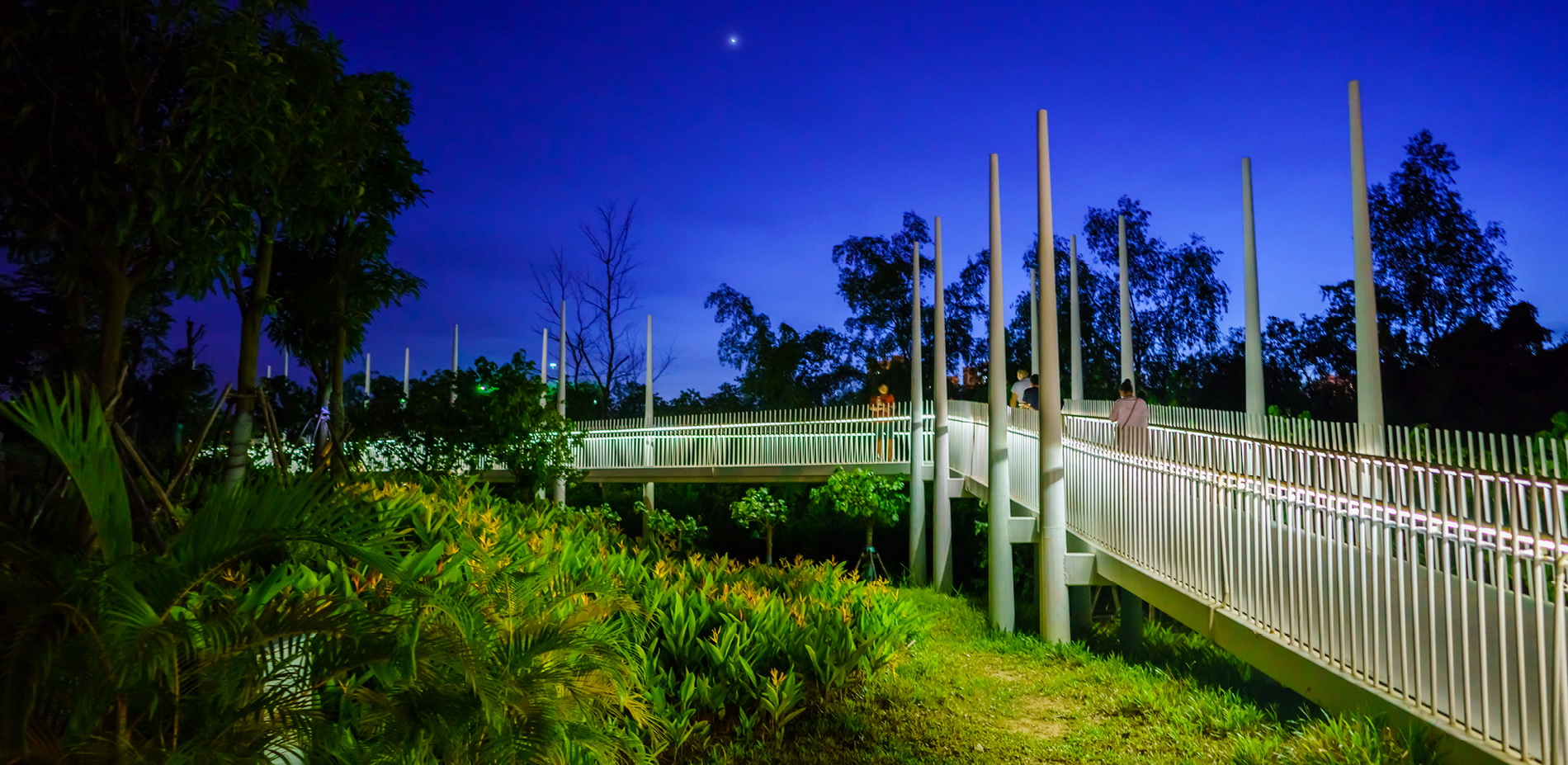Deep Form of Designed Nature: Sanya Mangrove Park
Honor Award
General Design
Sanya City, Hainan Province, China
TURENSCAPE
The waterways on China’s Hainan Island have proven to be vulnerable to flooding, but a new landscape within the Sanya River restores previously decimated mangroves that alleviate some of that risk while serving as a lush pedestrian recreation zone within high-rise city. Developers had left behind concrete retaining walls and polluted waterways, but now a thriving ecotone welcomes ocean tides with a porous edge condition that supports new mangrove growth. Terraced landscapes and elevated pathways bring visitors from the city down to water level, and storm-resistant concrete pavilions offer protection from overhead sun and tropical rain. The mangrove rehabilitation serves as a case study of strategies to return parts of cities to nature.
- 2020 Awards Jury
Project Credits
Kongjian Yu, Lead Designer
Lin Guoxiong, Project Manager and Landscape Architect
Zhang Yu, Landscape Architect
Zhang Jianqiao, Landscape Architect
Bai Zhen, Landscape Architect
Song Jia, Landscape Architect
Yu Wenyu, Landscape Architect
Zheng Junyan, Landscape Architect
Wu Fan, Landscape Architect
Wang Yufei, Landscape Architect
Li Fei, Landscape Architect
Wang Fang, Landscape Architect
Project Statement
As an action of mitigating urban flood risk caused by climate change, the restoration of mangrove along the waterways and coastal shorelines are critical for the tropical city Sanya in China’s Hainan Island. One of the key challenges is to find an efficient and inexpensive method to restore the mangrove habitat extensively that have been destroyed in the past decades due to rapid urban development. Right in the middle of the city and in just three years, an area of lifeless land fill within a concrete flood wall has been successfully restored into a lush mangrove park, where nature and people harmoniously share the meeting of ocean tides and fresh water. The project demonstrates the success of the design strategy based on the ecological processes of wind and water, which produces a designed ecotone made of inter-locked fingers to speed up the natural process of mangrove rehabilitation. Such a mangrove rehabilitation method had been implemented at a large scale efficiently.
Project Narrative
1. Site Challenges and Objectives
Three decades of ruthless development has left Sanya,a tropical tourist city in China’s Hainan Island, a mess of destruction in terms of landscape. Almost all waterways in the developed districts have been polluted and filled with garbage. Concrete flood walls were built to claim land for development that killed the mangroves, wiped out the riparian habitats, and blocked tides from the sea and storm water from the upper land causing urban inundation and reducing the resiliency against climate change. Meanwhile, increased population, particularly seasonal tourists and immigrants are demanding more connected parks along the rivers, which were sadly inaccessible. In 2015, the city government decided to make dramatic changes, and the landscape architect was called upon to design this demonstration project: Sanya Mangrove Park. The method tested in this experimental project will be implemented in other mangrove rehabilitation projects at large scale throughout the region.
The site is 10 hectares (2.471 acres) in size, on the east bank of Sanya River that bears the name of the city itself, and in the central area of the city. Analysis shows that the site is also critical in terms of ecological relationships between the sea and inland, where the daily sea tides meet with the fresh water of the river. Typical of the city, the water is polluted due to the urban runoffs. High concrete walls have enclosed the site that is filled with urban debris for a new development project that has been stopped by the government. An artery road runs by, and there is a 9 meter steep drop from the road to the water, challenging public access to the water.
The design objectives are to rehabilitate the mangroves and make the site a park showcase for citywide urban renewal and ecological recovery. Several site challenges have to be addressed: (1) Wind--the strong annual tropical monsoon storms may harm the process of mangrove rehabilitation and destroy the fledging mangrove planting; (2) Water-- the upper stream floods from the monsoon storm water may wash away the young mangrove community; (3) Pollution: The polluted urban runoffs may damage sensitive mangrove seedlings and the biodiversity of the mangrove community; (4) Access: public accessibility and natural restoration need to be well integrated.
2. Design Strategies:Form follows processes
In addressing the above site challenges and to achieve the project objectives, the following design strategies were taken:
(1)Balanced earth work and recycling of materials: the land fill composed of urban construction debris and concrete materials from the demolition of the flood wall are recycled on site, and by means of cut-and-fill, ecotones of water ways and riparian habitats of various elevations are created for diverse fauna and flora, particularly different species of mangroves;
(2) Inter-locked fingers: a land form of inter-locked fingers was designed to lead ocean tides into the park. This is necessary for the mangroves, but they must at the same time avoid annual strong tropical storms from the sea and the storm water flood and pollution from the upper stream mountain and urban area that may harm the establishment process of the mangrove community. This also maximizes the edge effects (water edge length increases 6 times from 700 meters to over 4000 meters) and habitat diversity with water depth varies from 0 to 1.5 meters, and creates a dynamic aquatic environment following the rise and fall of tides, which are necessary for some aquatic species.
(3) Terraces and bio-swales: Making use of the 9-meter drop from the urban road to the water level, terraces are integrated with bio-swales to catch and filtrate the stormwater from the urban pavement and road, creating public spaces at different elevations.
(4) Adaptive design of pavilions and access: a network of pedestrian passageways follow the landform. A skywalk is designed as a ramp to create an experience of walking above the mangrove canopy; five pavilions are strategically allocated allow visitors to enjoy the tranquility and beauty within the mangroves, as well as providing necessary shelter and shading in the changeable local weather. The modulated concrete shelters are designed to resist strong tropical storms; they open to views from various angles. The twisted pavilions make good shelters for bird watching.
3. Conclusion
This project is a great success. Just three years after its construction, its objectives have been fulfilled. The mangroves within the interlocked fingers have established well. Along with the flourishing mangroves, fish and birds are abundant, attracting visitors of different ages. The park has become a daily recreational place for the local communities, and a showcase of ecological restoration that not only benefits the natural environment, but the public welfare. The approach tested in this experimental project has been implemented in other mangrove rehabilitation projects at large scale throughout the region.
Products
- Lesso
- Howell
Plant List:
- Coconut tree
- Areca palm
- Washingtonia filifera
- Council tree
- Saman tree/Rain tree
- Mango tree
- Wampee tree
- Jack tree
- Water apple/Wax apple tree
- Japanese banana/hardy banana
- Traveller's tree
- Licuala grandis
- Golden cane palm/areca palm
- Timothy Wood
- Barringtonia racemosa
- Sea mango
- Peltophorum pterocarpum
- Sea hibiscus
- Cleistocalyx operculatus
- Water yellow peel
